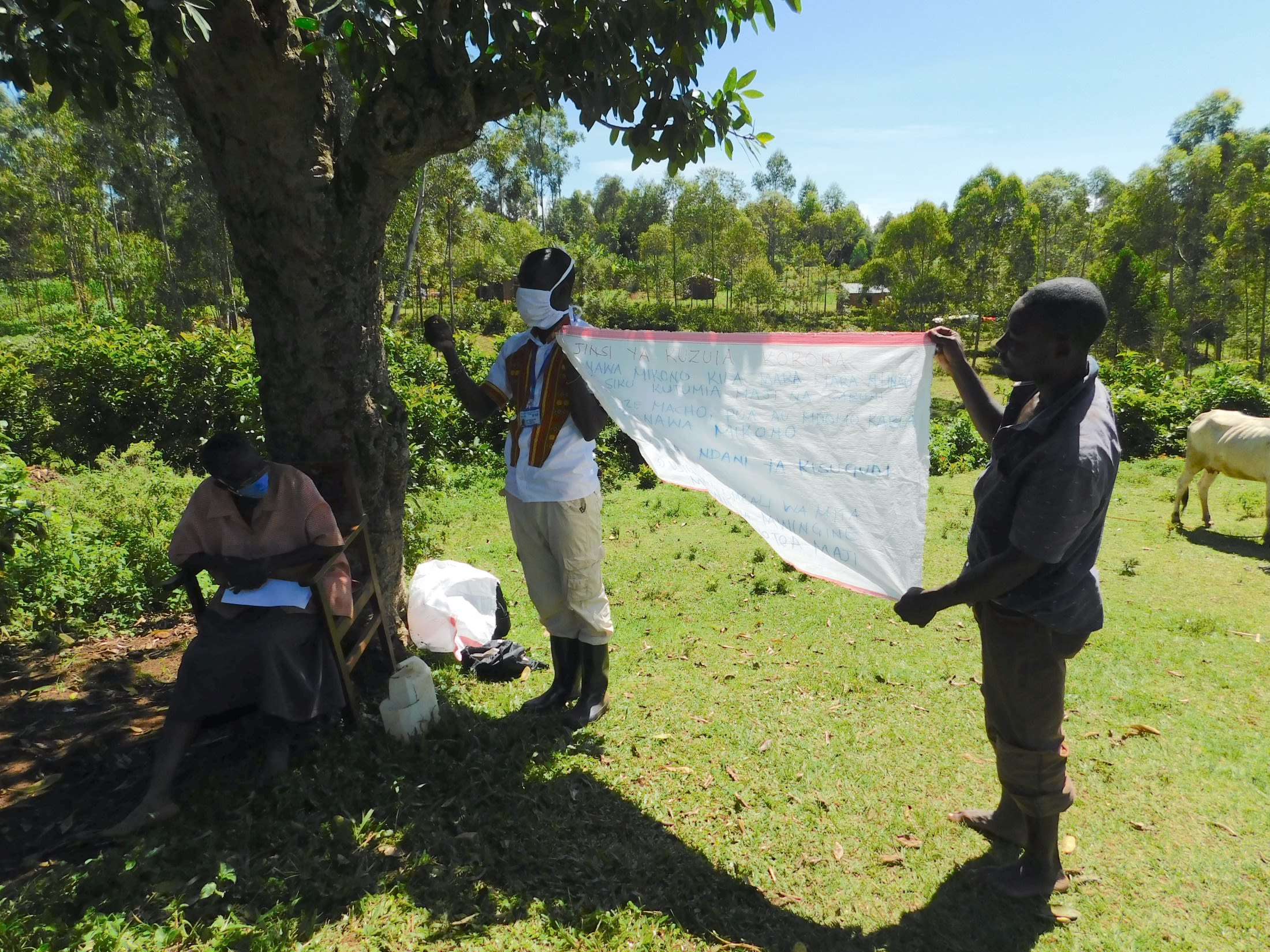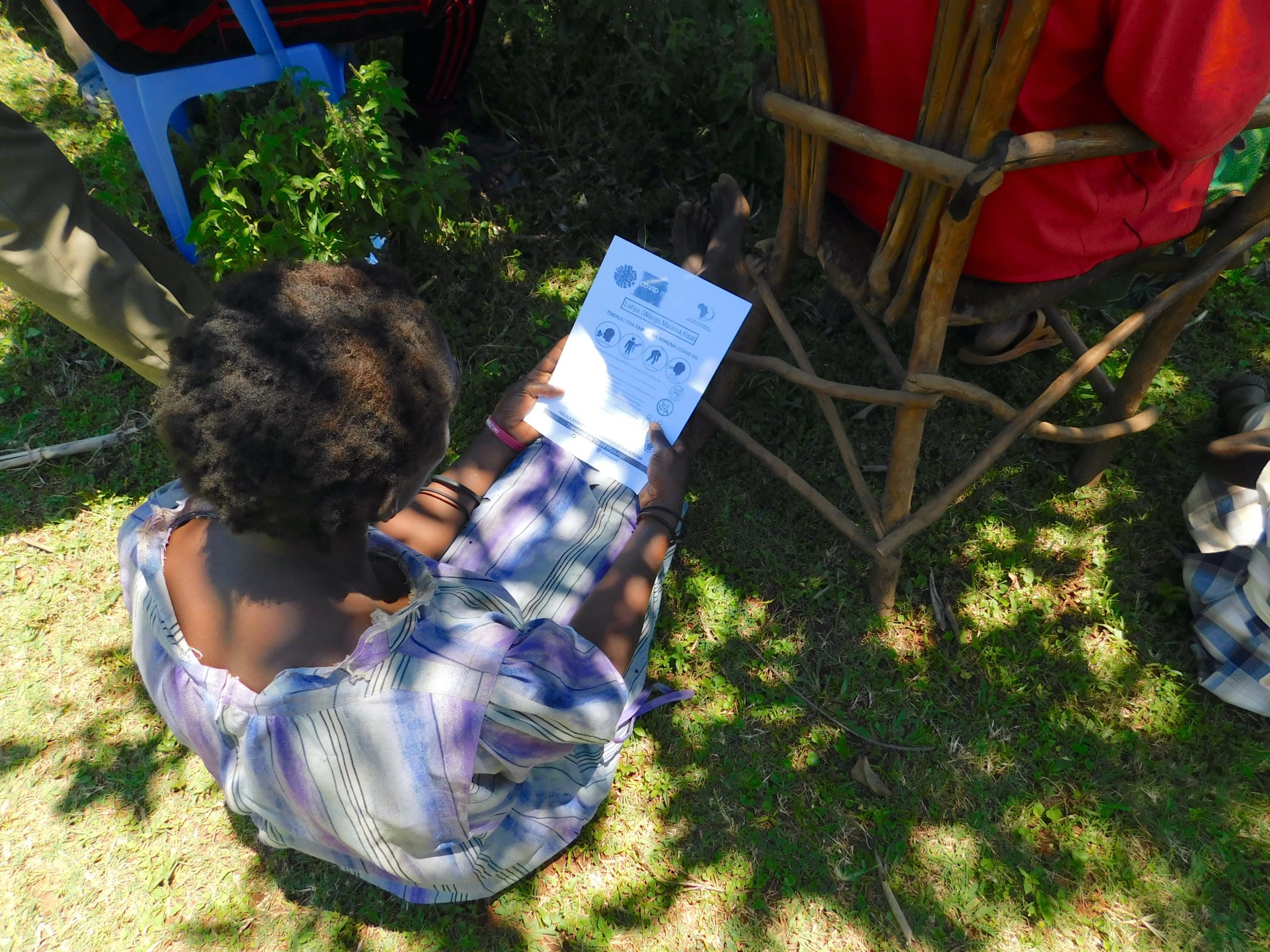This project is a part of our shared program with Western Water And Sanitation Forum. Our team is pleased to directly share the below report (edited for clarity, as needed).
Background Information
Melicsadeck Spring is found in Mwirombi Village, Ebusiralo Sub-Location, Iwanda Township Location, Lwanda Township Ward, Lwanda Sub-County of Vihiga County. According to the village elders, the spring has existed since 1968. The spring serves a population of 630 people from 90 households, out of which 305 are male and 325 are female. Beneficiaries use the spring's water for drinking, cleaning, and watering their animals.
(Editor’s Note: While this many people may have access on any given day, realistically a single water source can only support a population of 350-500 people. This community would be a good candidate for a second project in the future so adequate water is available. To learn more, click here.)
Justification
The spring is located in low land. This makes it especially subject to muddy runoff from the upper region. This runoff includes human waste. Mr. Melicsadeck, the landowner, confirms that there have been many cases of diarrheal illnesses such as typhoid and cholera after drinking the spring water.
The community's sanitation situation is also critical. A majority of the households have latrines that are in very poor condition. Children and the elderly avoid using these latrines for fear of falling through the floor, and must resort to using the bushes outside. The community is in dire need of sanitation facilities.
There is also a need for sanitation and hygiene training. If the community is sensitized to the importance of healthy behavior and preventative measures, along with a protected spring, many lives would be saved.
Water and Sanitation Management Committee
This training was held from November 17-18. A total of 13 people were in attendance, of which eight were male and five were female. The aim of training was to equip the committee with the necessary skills for managing and maintaining Melicsadeck Spring.
In order for the community to feel a sense of ownership for this project, they will be required to contribute the following local materials: clean sand, ballast, hardcore, bricks, and fencing poles. If need be, people should also host work teams during the construction process.
The committee elected five households that will benefit from new sanitation platforms (easy-to-clean concrete latrine floors). These families will have to sink their own pits and provide clean sand, bricks, and wall materials.
The committee also enjoyed a practical session at the spring site. This briefed them on sources of water pollution, such as erosion and open defecation. Participants agreed to take the following steps to help prevent water contamination:
- Dig trenches for drainage
- Construct gabions to prevent soil erosion
- Plant grass around the catchment area
- Build a fence to keep animals away
- Limit farming near the spring
- Regularly pick up garbage
Beyond making sure the spring's water stays safe and clean, community members can also practice these hygiene measures:
- Always use latrines
- Cook food thoroughly
- Properly store food and water
- Wash hands with soap and water
- Treat or boil drinking water
The locals were humbled to be considered beneficiaries of this project. For them it was an answered prayer. The facilitator also thanked the community members for their wonderful attendance and participation. Everyone was also grateful for Mr. Melicsadeck's sacrifice of time in allowing workshops to be held on his property.
Community Health Worker Training
The community health worker (CHW) training was held from November 18-19. It was attended by 12 people of which seven were female and five were male. The training aimed to promote sensitization about hygiene and good health in Mwirumbi Community.
In this training, the facilitator demonstrated the connection between germs and disease, the environment, and the host. Every participant agreed that most diseases that plague the community can be prevented if the human host relates to their environment in a good way. Barriers can be built between germs and the human host, such as construction and use of latrines, washing hands, and properly cooking food.
The facilitator also taught about how there are three stages at which water can be contaminated. This can happen at the spring, on the way home, or in the home itself. The participants were shown pictures which showed both good and bad habits, and by the end of the session they were able to label them. They resolved to incorporate good habits to ensure that their water would always be of good quality. This includes storing water in clean containers, protecting the spring, and boiling or treating drinking water.
Three participants were chosen to take on the role of CHW, to promote good hygiene and overall health in the community. They will be responsible for teaching others about the three facets of hygiene: food and water, physical, and environmental. They will also be able to demonstrate the 10 important steps of hand-washing and when to do so!
Participants were grateful that the donor and organization reached out to them. They all look forward to better health and thus greater development and self-reliance.
Project Results:
Spring Protection
Protection of Melicsadeck Spring of Vihiga County is complete and now in use by community members. Before construction, the spring served a total of 90 households from Mwirombi Village. Users noticed that this total was very low because many villagers would travel and search for other cleaner sources of water. Melicsadeck Spring was never used properly and always appeared to be dirty. But after the protection project, an overwhelming amount of people started getting their water from the spring instead! More than 120 households are now getting their drinking water from Melicsadeck Spring. These people have been saving much more time since they stopped traveling to less convenient sources. This saved time is now used for more productive activities like studying, farming, and household chores.
Community members are confident that their water is clean and safe since the spring is no longer open to contamination from surface runoff and human activities. The Water Committee chairperson has noticed a huge decrease in conflicts that would result from long waits at Melicsadeck Spring. The construction has made it much more efficient to draw water, so these long lines are no more. The committee expects cases of waterborne disease to significantly decrease. This decrease in disease will also give families a chance to save the money that would previously for treatment.
Household Sanitation Platforms
A total of five sanitation platforms have been installed and are now in use by beneficiaries. Five different families are using these new facilities, putting the total of beneficiaries at 32. Sanitation training enabled these 32 people to take responsibility for using their latrines properly, for they now know about the dangers of open defecation.
A beneficiary said "Our children enjoy using this facility so much that you will see them go in every minute."
Thank You for unlocking potential for the community of Melicsadeck Spring!
 Protected Spring
Protected Spring
 Rehabilitation Project
Rehabilitation Project
























